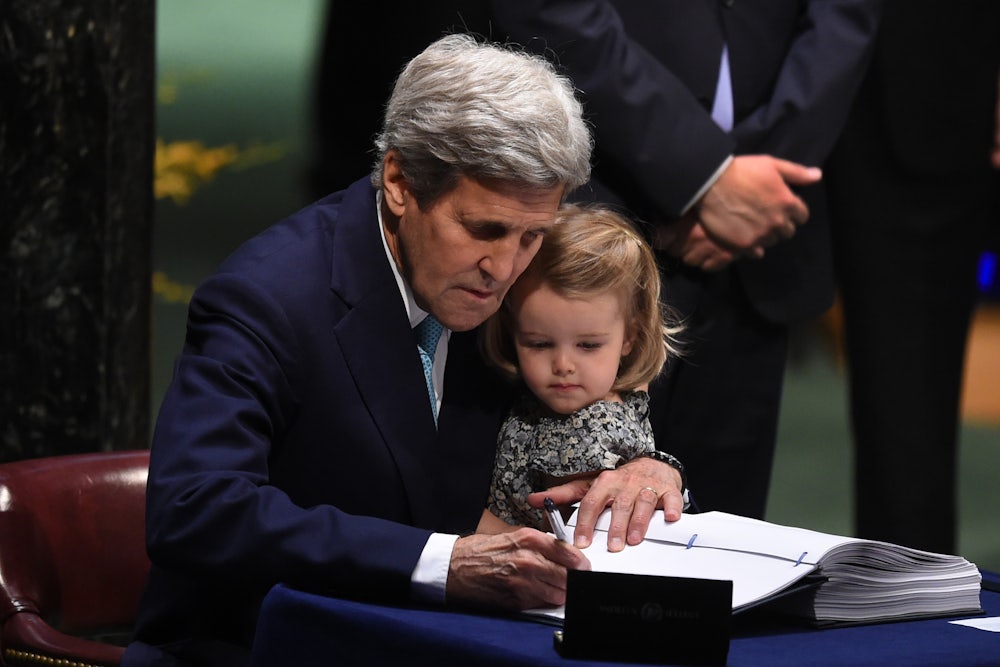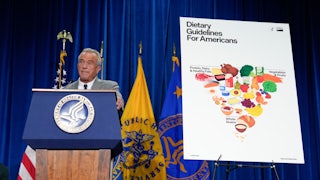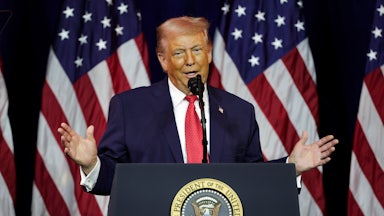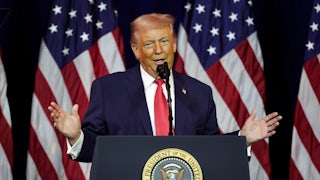The Paris Agreement is a paradox. On the one hand, it provides an essential, shared framework for the nations of the world to tackle the climate crisis. On the other, as those who follow climate politics closely have long known, it has almost no power to ensure the commitments made under it are anything other than a load of crap. New numbers have helped quantify the problem.
On Friday, the United Nations Framework Convention on Climate Change released a new “synthesis” report tallying the carbon content of 48 updated “Nationally Determined Contributions,” a.k.a. how countries plan to do their part to curb warming. These new plans—representing 75 of the 191 nations signed on to the Paris Agreement—were revised last year, per the deal’s terms. And according to the U.N.’s tally, those pledges would deliver emissions that are just 0.5 percent below 2010 levels by 2030—a far cry from the 45 percent reduction the Intergovernmental Panel on Climate Change has suggested is necessary by that date to cap warming at 1.5 degrees Celsius (2.7 degrees Fahrenheit). Patricia Espinosa, the executive secretary of U.N. Climate Change, put it bluntly: “We are collectively walking into a minefield blindfolded. The next step could be disaster.”
It’s unambiguously good news that the Biden administration has rejoined Paris. The system, however, was flawed from the beginning—in no small part thanks to U.S. meddling. Rather than the sorts of binding targets present in previously proposed frameworks, the “ratchet mechanism” for bolstering NDCs is based on an honor system: Countries with pledges that already extended through 2030 could resubmit their old ones, while those that ended in 2025 had to be updated. The signatories who did ratchet up are now on pace to emit just 2.8 percent less by the start of the next decade than they were under their old plans—a modest improvement but nothing to write home about. The world’s two biggest emitters—the U.S. and China—still haven’t released updated pledges. China has stated that it plans to reach net-zero emissions by 2060, and the Biden administration has pledged to announce new 2030 targets—toward the goal of getting to net-zero by 2050—at an Earth Day summit in April. There are no consequences for any of the laggards and every incentive to keep a stream of positive press releases about net-zero pledges coming from countries and corporations.
Net-zero pledges are their own genre of crap. Climate justice groups—particularly those from climate-vulnerable countries—have consistently raised concerns about the faulty accounting embedded in such promises, which place enormous faith in unproven technologies to counterbalance continually rising emissions. Just this week, Friends of the Earth International released a report supported by the Third World Network, the Indigenous Environmental Network, and La Via Campesina (among many other groups) once again taking aim at the creative math that can obscure a nation’s or company’s intent to keep emitting at unsustainable levels.
“‘Net zero’ is a smokescreen, a conveniently invented concept that is both dangerous and problematic because of how effectively it hides inaction,” the groups wrote. “We have to unpack ‘net zero’ strategies and pledges to see which are real and which are fake.” Instead of pledges that rely inordinately on technological fixes we don’t yet have, they call instead for commitments to “real zero,” including “a coordinated phase-out of fossil fuel production and consumption,” along with “binding rules on big business, allowing us to rein back the power of transnational corporations (TNCs) and provide victims with access to justice, compensation and restoring of their livelihoods wherever crimes occur.” Carbon markets, they argue—baked into Article 6 of the Paris Agreement, thanks in part to Shell—won’t cut it: They mainly create new profit-making opportunities in the form of carbon-offset markets that do more harm than good. These often rely on land grabs that threaten biodiversity, all with dubious climate benefits.
Mark Carney—the former Bank of England head widely credited with pushing climate concerns in the financial sector—unintentionally illustrated climate justice campaigners’ concerns this month. In an interview with Bloomberg on February 10, he claimed that the asset management firm Brookfield Associates is already net-zero thanks to the “avoided emissions” that its investments in renewables will bring about. Critics immediately pointed out the absurdity of this claim, as Brookfield also has billions invested in fossil fuels. Given that he’s advising the U.K. government in the lead-up to climate talks later this year, three people involved in planning that summit expressed concerns to Bloomberg that Carney’s comments “could undermine the meeting’s success.” On Friday, Carney issued a statement on Twitter revising his initial claim.
Carney isn’t unique among financiers in painting himself as green while holding investments in dirty energy. Blackrock is particularly renowned for branding itself as a climate-conscious asset manager by offering niche sustainable investment products. Its bread and butter, meanwhile, still comes from passively managed index funds that continue to invest heavily in coal, oil, and gas.
As the United States prepared to officially rejoin Paris earlier this month and re-up its NDC, the international Climate Action Network joined more than 190 other groups from around the world calling on the Biden administration to honor its “fair share” to cap warming at 1.5 degrees Celsius, accounting for its historical contribution to the problem. That would mean reducing domestic emissions by 70 percent by 2030 and providing financial and technological support for an additional 125 percent reduction in global south countries.
As I’ve written here before, the U.S.—should the White House want to—could use its outsize sway in the world order to help turn the Paris commitments into reality, leveraging its wealth and power in institutions with more teeth than the U.N., like the World Bank or International Monetary Fund. Just this week, Treasury Secretary Janet Yellen expressed her openness to extending IMF Special Drawing Rights that could help alleviate debt crises in the global south, and make it more possible for countries there to participate in the energy transition and prepare for climate change. Setting up a climate hub in her department could lead to binding regulations that keep financial institutions from funding climate destruction. Taking such steps before governments convene in Glasgow for the Conference of the Parties to the UNFCCC, or COP 26, in November could offer a sign of good-faith engagement in the process, worth more than any number of feel-good press conferences.
Or the administration could just pretend that the math will all work out eventually.








